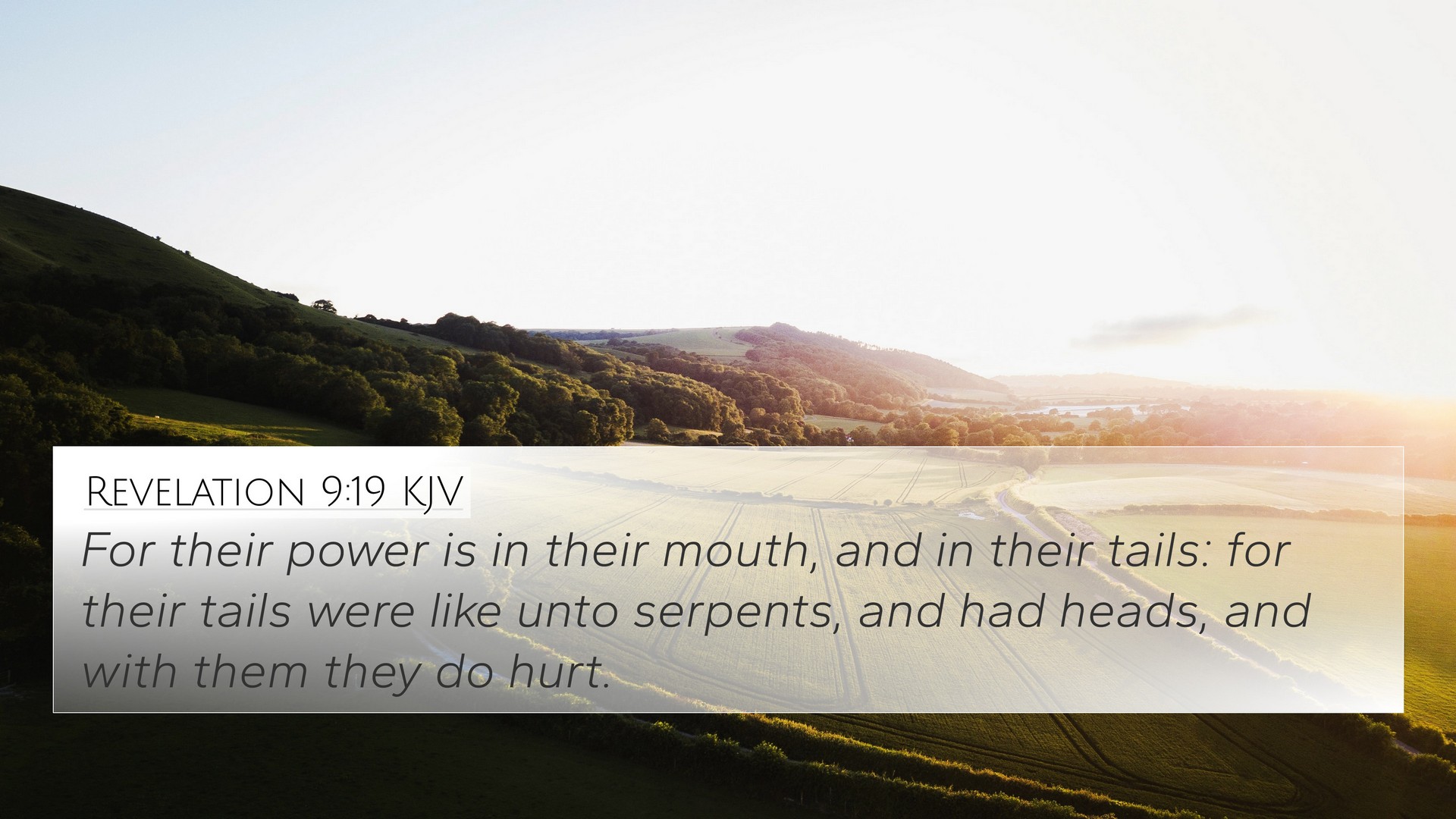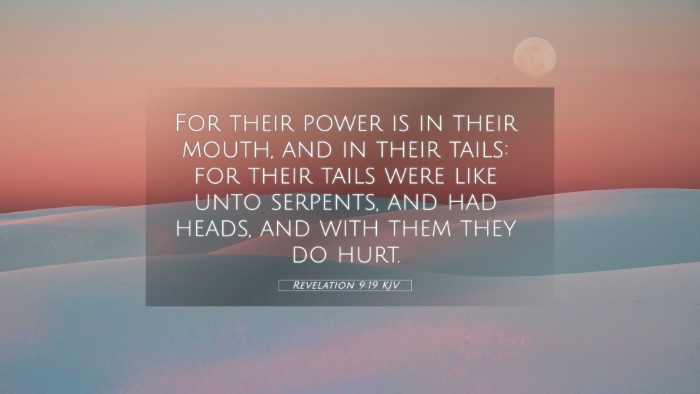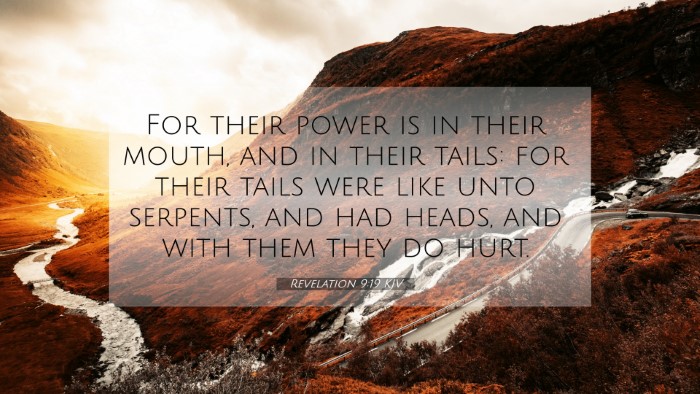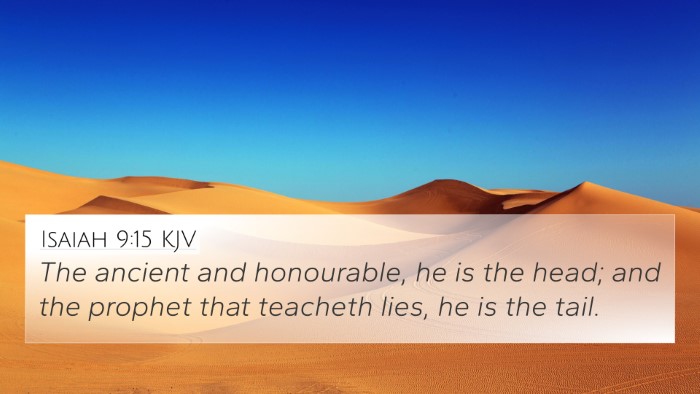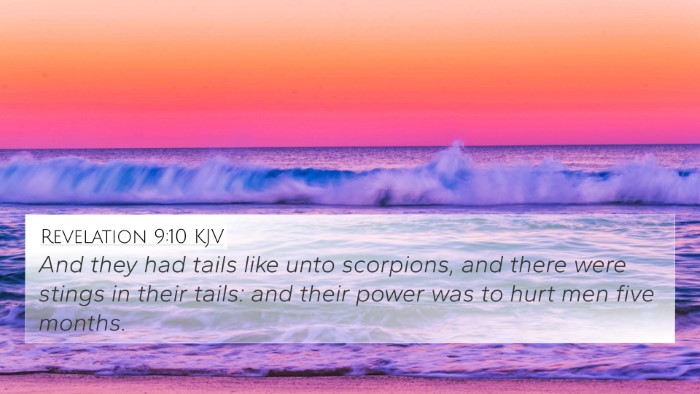Understanding Revelation 9:19
Revelation 9:19 (KJV): "For their power is in their mouth, and in their tails: for their tails were like unto serpents, and had heads, and with them they do hurt."
Summary of Revelation 9:19
This verse is part of John's apocalyptic vision that contains vivid imagery and symbolic language, focusing on the destructive power of the locusts released during the fifth trumpet judgment. Their 'power' being described as existing in both their mouths and tails emphasizes a duality of threats—what they speak and what they can inflict through venomous action.
Commentary Insights
The meanings derived from public domain commentaries underline the following points:
-
Matthew Henry's Commentary:
Henry elaborates on how the power of these creatures represents the influence of evil and deception. The 'mouth' signifies false teachings, leading people astray, while the 'tail' symbolizes the pain and destruction they can bring, akin to the deceit of the serpent in the Garden of Eden.
-
Albert Barnes' Notes:
Barnes emphasizes the significance of the 'tails' being serpent-like, indicating that their methods of causing harm are insidious. He connects this image to the serpent's craftiness and capacity to strike unexpectedly, reinforcing the idea of spiritual warfare against believers.
-
Adam Clarke's Commentary:
Clarke points out that the locusts here symbolize a corrupt system, perhaps signifying both human authority and demonic influence. He connects it with Ezekiel's vision where similar imagery is used, pointing to the duality of power—both in speech and action—through which evil manifests itself.
Bible Verse Cross-References
This verse intricately connects with various other scriptures that amplify its themes of deception, destruction, and spiritual warfare:
- Genesis 3:1: The serpent's cunning nature connects to the metaphor of the locusts, reminding us that deception is often subtle.
- Exodus 10:4: The imagery of locusts mirrors the plagues in Egypt, emphasizing the judgment aspect featured in Revelation.
- Isaiah 9:15: The corrupt leaders are likened to serpents, reinforcing the theme of spiritual aggression amongst those in power.
- Ezekiel 2:6: This verse talks about the rebellious house of Israel, diving into the destructive nature of those who deviate from righteous paths.
- John 10:10: “The thief cometh not, but for to steal, and to kill, and to destroy…” This aligns with the intent of the locusts as destructive agents.
- 2 Corinthians 11:14: Paul warns that Satan disguises himself as an angel of light, similar to how the locusts can appear non-threatening before causing harm.
- Revelation 12:9: The great dragon, the serpent of old, is cast down, linking back to the roots of evil presented in the imagery of the locusts.
Inter-Related Themes
Within scripture, there are prevalent themes that echo through connecting verses:
- Deception: The persistent danger of being led astray by false teachings can be seen in numerous texts across both Testaments.
- Judgment: The punishment of unrepentant sin is a recurring element that connects this imagery to God's ultimate authority.
- Spiritual Warfare: The battle against unseen forces is a major theme throughout the Bible, emphasizing the need for vigilance.
Tools for Bible Cross-Referencing
For those seeking to delve deeper into the connections and implications of Revelation 9:19 and similar verses, the following resources are helpful:
- Bible Concordance: This essential tool allows users to locate every instance of specific keywords or themes.
- Bible Cross-Reference Guide: Utilizing a guide can illuminate connections between various scriptures that may not be immediately apparent.
- Cross-Reference Bible Study: Engaging in studies that highlight interconnected verses, enhancing understanding through comparative analyses.
Conclusion
Revelation 9:19 serves as a powerful reminder of the dangers posed by false teachings and the consequences of choosing paths that lead away from divine truth. By engaging with the broader Biblical narrative and employing effective cross-referencing tools, one can gain a richer understanding of both the specifics of this verse and its place within the grand tapestry of scripture.
